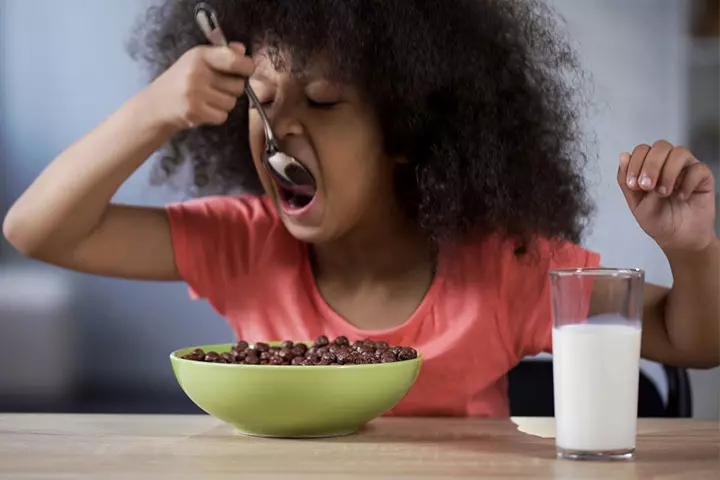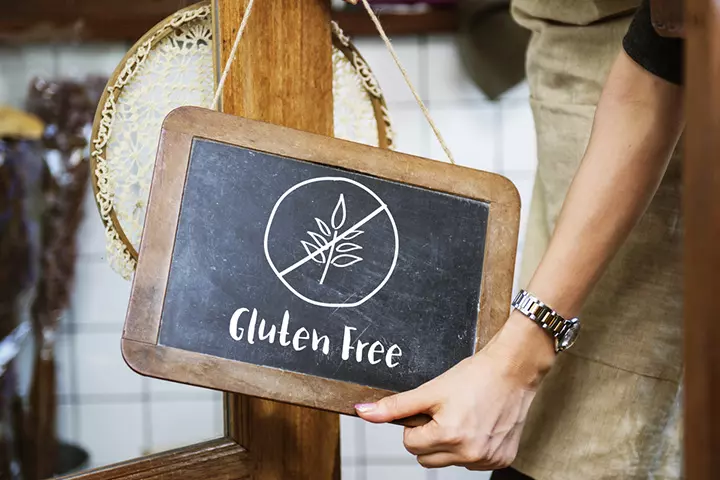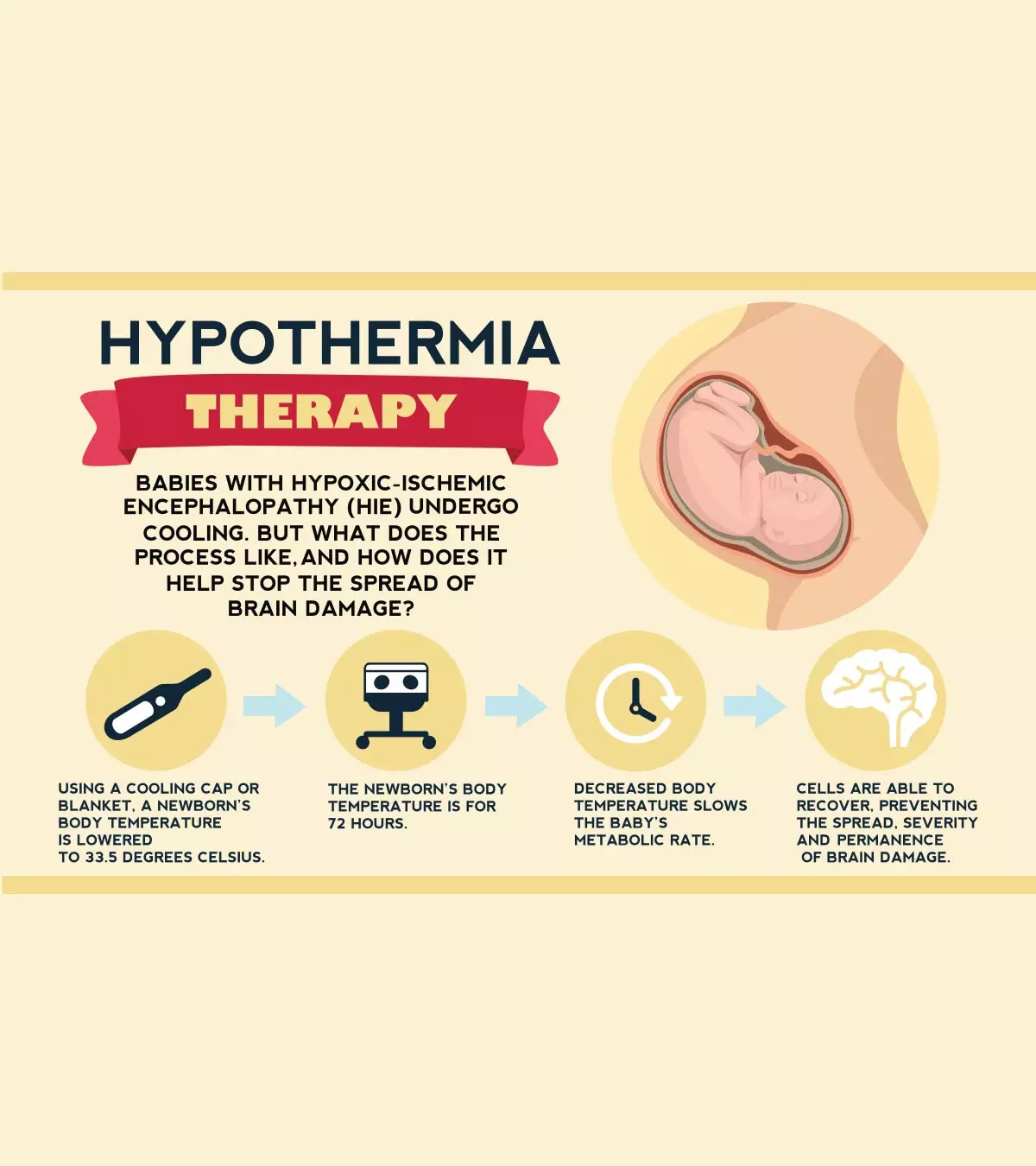

Image: Shutterstock
Food and nutrition are a vital part of one’s life, and as parents, we need to guide our children into making healthy choices. The statistics are scary — according to the Centers for Disease Control and Prevention (CDC), the obesity rate among children has nearly doubled than it was around thirty years back (1). When it comes to making the right choices about food, there is a lot of ambiguity. We’re often misled into thinking that certain foods are healthy when truly, they are not.

In the world of nutrition and fitness, fads too have a way of making it into the mainstream. Every once in a while people would just blindly follow the latest trend of diet or workout. And as these fads are what drive people to put their time, money and effort into, companies that sell products in such areas jump in on the bandwagon. However, often many such trends dont really give as much benefits as they promise to give and at times could even actually be bad for us.
Listed below are five prevalent food myths that are most likely causing a lot of weight gain and health issues in your child. We’re about to bust these myths, so read on:
1. Cereal Makes For A Healthy Breakfast
Image: Shutterstock
Kids love cereal, and parents do too. Children love them because they’re tasty and fun to eat, while parents love them because it saves them a lot of time during the morning rush hour. But is it a healthy breakfast option? Not at all. Most cereals brand themselves as beneficial, but there’s more than what meets the eye. The labels are misleading — these cereals probably contain all the “healthy ingredients” they claim to have, but these benefits are often useless, thanks to the high sugar content. The real taste of cereals is rather bland and kids would not jump into it without adding flavors and sweetening.
Most cereals contain excessive glucose, leading to a spike in blood sugar levels, obesity, and caloric intake. Also, these are processed foods — and we’ve been told time and again to steer clear of such items (2). A better option for breakfast would be oatmeal, low-fat yogurt, eggs, fruit, and homemade smoothies.
2. Everything Labeled “Gluten-Free”, “Diet”, And “Organic” Is Healthy
Image: Shutterstock
As far as the world of food and healthy eating are concerned, “gluten-free”, “diet”, “organic” are all the new buzzwords. Foods with such labels push you to believe that what you are consuming is healthy, but that isn’t necessarily so. When buying food, don’t blindly look at labels; instead, look at what the food offers as a whole.
You also need to check for artificial sweeteners, sodium content, calories, and nutritional value. Only a label that says “gluten-free” or “diet” isn’t sufficient to determine if the food is healthy or not. Several foods that claim to be healthy have a high sodium content. Did you know that too much sodium can cause high blood pressure? And yes, children can have high blood pressure too, as well as unhealthy weight gain. Artificial sweeteners are known to cause overeating, leading to weight gain and obesity. What your child needs is wholesome foods rich in nutrients and significant amounts of minerals, vitamins, and calcium (3), (4), (5).
3. Frozen Yogurt Is Better For Dessert Than Ice Cream
Image: Shutterstock
Says who? Definitely not the medical health professionals! Frozen yogurt indeed boasts of a lot more health benefits than most ice creams do, making it the healthier alternative. However, this doesn’t make it the best option for your child. There are a lot more calories in frozen yogurt than you’d like to believe. One large cup of your favorite frozen yogurt contains close to three hundred and eight calories. Additionally, you’ll find around seventy-six grams of sugar — add to that your child’s favorite toppings (such as sprinkles, syrup, candy), and the numbers only soar higher. The bottom line is that frozen yogurt can be as fattening and unhealthy as ice cream (6).
Does that mean you ban your child from having frozen yogurt ever again? You don’t have to. Make it at home instead. You’ll find low-fat frozen yogurt at the supermarket. Add to this some fresh fruits for some natural sweetness. You could also add some honey. Your child will enjoy this healthier option too!
4. Fruit Juice Is So Healthy!
Image: Shutterstock
It is a common misconception that fruit juices are healthy because, well, fruits are healthy. But what most people don’t know is that most sugary beverages have a high caloric value, which can contribute to weight gain and dental problems in kids. Additionally, fruit juices lose most of the fiber content present in fruits in the juicing process. So, it is a better idea to give your child fresh fruits instead of fruit juices. Store-bought juices are all the more unhealthy, considering that they have added preservatives and excessive amounts of sugar (7), (8).
5. Whole Wheat Bread Is Healthier Than White Bread
Image: Shutterstock
There is not much of a difference between white bread and whole-wheat bread. Not many people know this, but whole wheat bread has pretty much the same high levels of glucose as white bread, and it is broken down into your bloodstream in the same way that white bread is broken down. Whole wheat bread too can lead to weight gain, diabetes, and other serious health problems. In most cases, processed whole wheat has extremely low fiber content. Take extra care when reading the labels on bread, and opt only for those with hundred percent whole wheat grains or multigrain bread (9).
We can’t stress enough the importance of maintaining a well-balanced diet complete with all the nutrients that your child needs. In today’s age of readily available food products, brands want to sell more and more of their products and the high sugar content is one of the ways that increase their sales. Also, health myths help brands sell the latest fad in greater volume. So, avoid getting misled and do your own research when deciding for the best nutrition for you and your family. When in doubt, talk to a nutritionist, and always cross-examine what truly goes into your child’s plate. What are your thoughts on this? Let us know in the comments below!
References
- Childhood Overweight & Obesity
https://www.cdc.gov/obesity/childhood/index.html - Cereal Processing Influences Postprandial Glucose Metabolism as Well as the GI Effect
https://www.ncbi.nlm.nih.gov/pmc/articles/PMC4673596/ - Sodium Intake and Hypertension
https://www.ncbi.nlm.nih.gov/pmc/articles/PMC6770596/ - Sugar substitutes: Health controversy over perceived benefits
https://www.ncbi.nlm.nih.gov/pmc/articles/PMC3198517/ - Are Food Labels Effective as a Means of Health Prevention?
https://www.ncbi.nlm.nih.gov/pmc/articles/PMC5206777/ - Frozen yogurt and ice cream were less healthy than yogurt
and adding toppings reduced their nutrition value: evidence from 1999-2014 National Health and Nutrition Examination Survey - Fruit Juices: Are They Helpful or Harmful? An Evidence Review
https://pubmed.ncbi.nlm.nih.gov/34071760/ - Review of 100% Fruit Juice and Chronic Health Conditions: Implications for Sugar-Sweetened Beverage Policy
https://www.ncbi.nlm.nih.gov/pmc/articles/PMC5916434/ - Dietary breads: myth or reality?
https://pubmed.ncbi.nlm.nih.gov/18367284/
Community Experiences
Join the conversation and become a part of our nurturing community! Share your stories, experiences, and insights to connect with fellow parents.
















